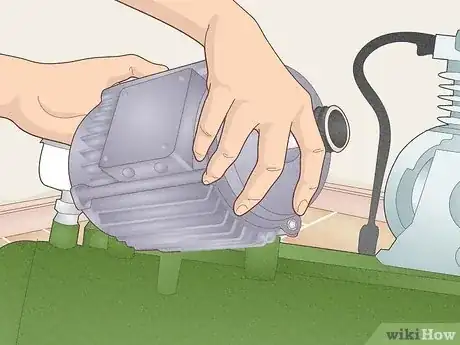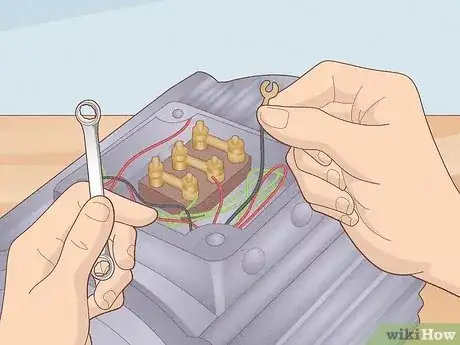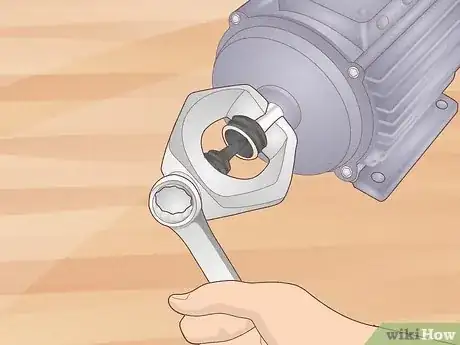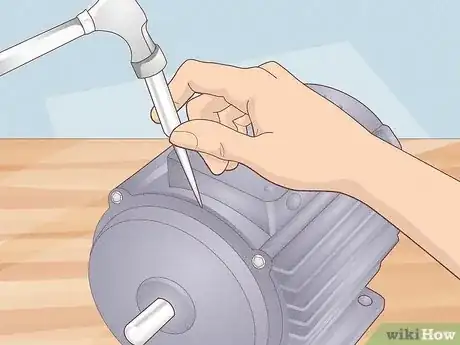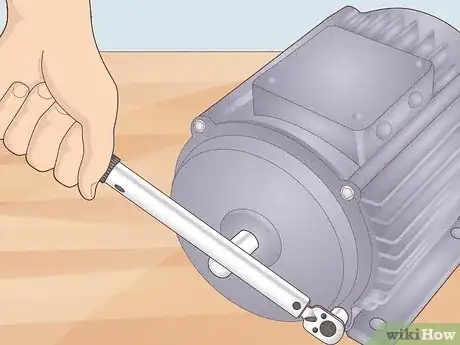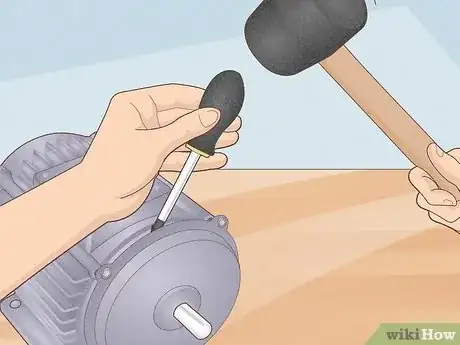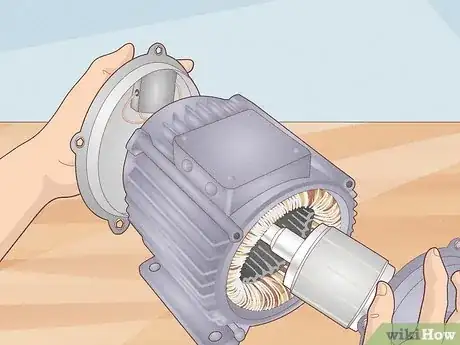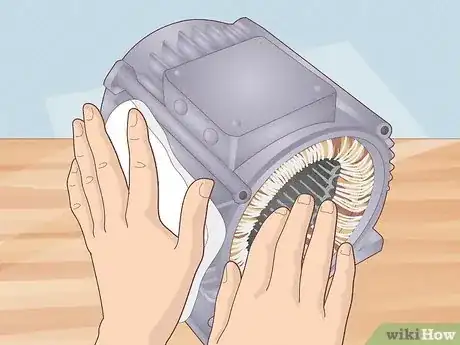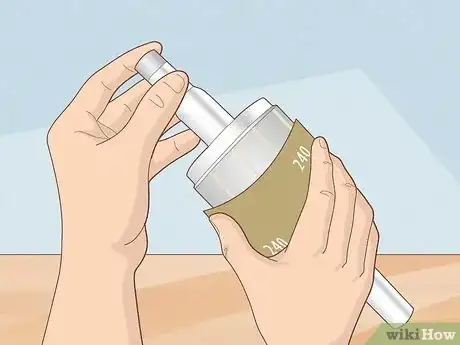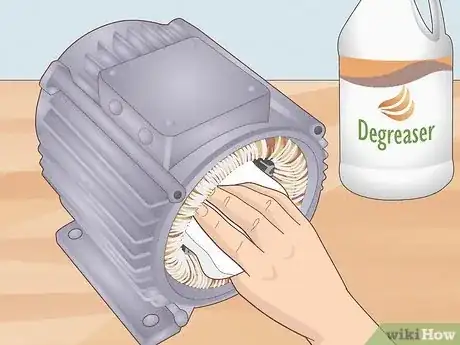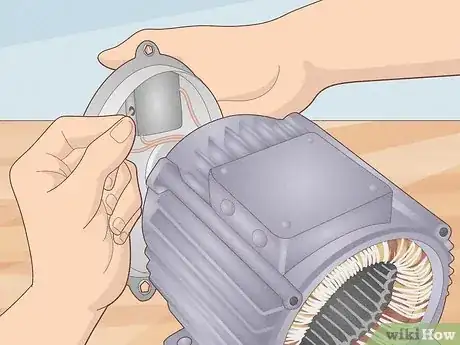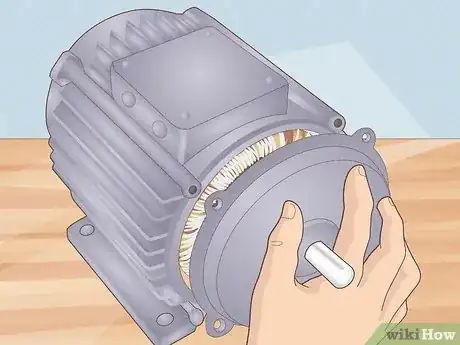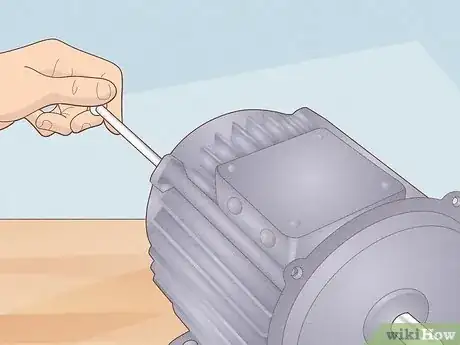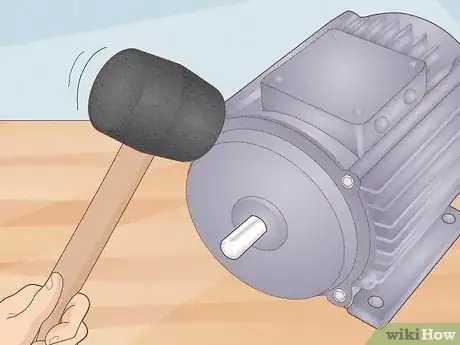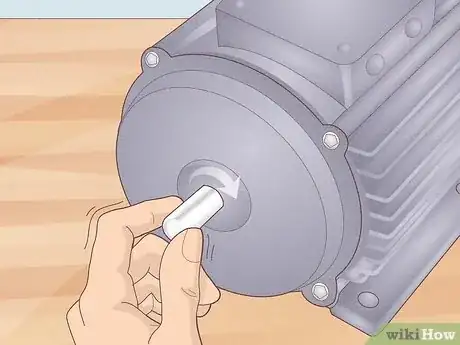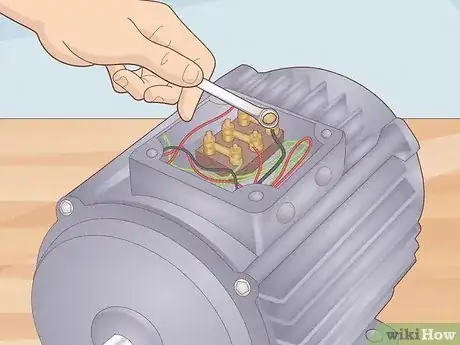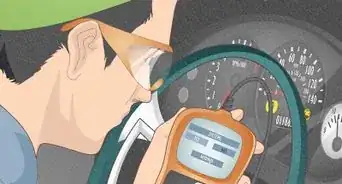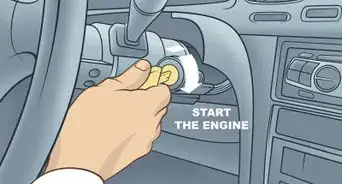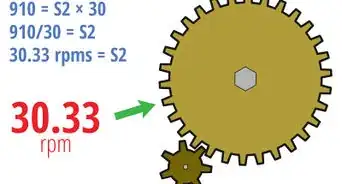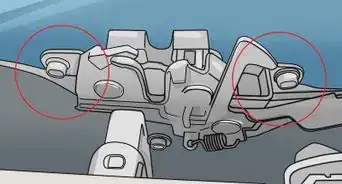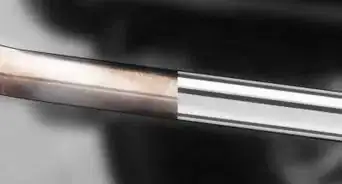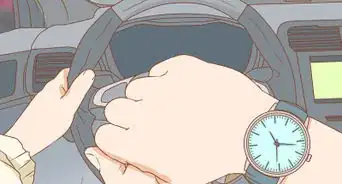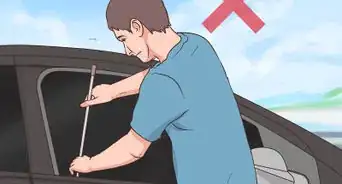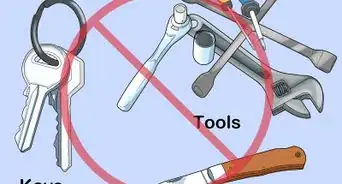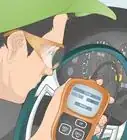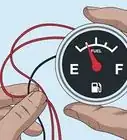This article was co-authored by Duston Maynes. Duston Maynes is an Automotive Repair Specialist at RepairSmith. Duston specializes in leading a team that handles a variety of automotive repairs including replacing spark plugs, front and rear brake pads, fuel pumps, car batteries, alternators, timing belts, and starter motors. Duston holds an Associate’s degree in Automotive/Diesel Technology from The Universal Technical Institute of Arizona and is a Certified Diagnostic Technician and Automobile Mechanics Technician through BMW STEP. RepairSmith received The 2020 Big Innovation Award by Business Intelligence Group and The Startup of the Year by the American Business Awards. RepairSmith was also included in Built in LA’s 50 Startups to Watch and The Business Intelligence Group’s 52 Names Leading the Way in Customer Service. RepairSmith offers in-home services to provide car owners convenient and complete auto repair everywhere.
This article has been viewed 47,825 times.
Cleaning a dirty motor involves working with small metal and electrical components. Remove the motor's components carefully to avoid damaging them. They can be cleaned off with a degreaser or another non-flammable cleaning solution. If you experience any trouble while cleaning the motor, consider taking it to an electrician for professional restoration.
Steps
Taking the Motor Apart
-
1Disconnect the motor and remove it from its mounting. Unplug the motor from its power source. Power should not be running into the motor, or else you’re in for a shock. Unscrew any bolts holding the motor in place if there are any.
- You can test the motor with a multimeter if you think it may have an electrical charge.
-
2Disconnect the wires from the terminals. Take a look at the motor’s exterior to locate the wires that connect it to other components in an electrical system. They are often bright red, black, or blue, so they should be easy to spot. Twist the wires with a wrench to free them from the terminals.
- Note the wire locations so you can reconnect them later. You may want to take pictures to help with this.
Advertisement -
3Remove the pulley with a gear puller. Find the gear shaft, which is a metal rod sticking out from 1 of the motor’s ends. The pulley is the small piece that looks like a wheel on the end of the shaft. Use the gear puller’s claws to grip the pulley, then pull it off the shaft.
- You can purchase a gear puller at most hardware stores.
-
4Mark the end bells with a center punch. At both ends of the motor, you will notice circular pieces of casing, often made with PVC. These end bells need to be repositioned precisely later, and marking them now makes that much easier. Hold the center punch to the exterior of each end bell and tap it with a hammer to create a small mark.
- Put 1 mark on the end bell underneath the pulley, then put 2 marks on the opposite end bell.
- Your motor may also have long metal tubes called housings. These are located behind the end bells. Mark them the same way.
-
5Unscrew the bolts from end bells using a socket wrench. Each bell is likely to have 8 bolts. Look for a set of bolts in the center, then another set around the outside rim. You will need to turn these counterclockwise with the socket wrench in order to loosen and remove them.[1]
- Depending on your motor, you may need a box wrench or a screwdriver instead.
-
6Tap the bells loose with a soft-faced hammer and screwdriver. A soft-faced hammer has a plastic, wooden, or lead head. Wedge the screwdriver between the bell and the motor. It should be positioned on the side closest to the motor. Then, use the hammer to strike the screwdriver until you are able to pull the bell off the motor.[2]
- Remember to get both bells, including the one on the side opposite of the pulley.
-
7Remove the motor’s ends and starter switch. The starter switch will be on the pulley end of the motor. It will be behind the end bell and housing. You will see a lot of copper wires connecting. Carefully pull off the metal piece holding the wires, taking care not to break any of the wires.
- If your motor does not have a starter switch, it will have a brush housing, which is a horizontal tube. Look for the massive bundle of copper wires inside it.
- Note the position and number of any shims. The shims are flat metal pieces that look like 2-pronged forks.
Cleaning the Components
-
1Wipe the dirt off the motor’s exterior with a rag. Avoid dampening, since you don’t want to get water in the electrical components. If the motor is still dirty, you can try using a commercial degreaser. These products may cut through the grime, but follow the manufacturer’s instructions to apply them safely.[3]
- You can purchase degreasers at many general stores or automotive stores.
-
2Brush dirt off wired areas 220 to 240-grit sandpaper. Use only very fine sandpaper to treat the areas around the copper wires in the starter switch or brush housing. Gently wipe the metal components to abrade any debris you see. Avoid using water or chemicals to clean this area.
- Rubbing the wires or getting them wet can cause your motor to short-circuit. The tightly-coiled wires are challenging for most people to fix.
-
3Clean the inside of the motor with a rag and degreaser. Choose a non-flammable cleaning fluid, such as the degreaser you may have used for the motor’s exterior. Moisten a clean rag with the product, then use it to wipe debris off of any area you can reach. Avoid getting anything on the wires.[4]
- If you can’t reach some of the degreaser, blow on the area until it dries.
Reassembling the Motor
-
1Pack the wires back into the switch or brush ring. You probably will have loosened some of the wires when you removed these parts. Fit the wires back inside by wrapping them around each other into coils. Be careful to avoid damaging them.
- As long as the wires aren’t broken, the motor should run properly.
-
2Replace the parts you removed for cleaning. Start with the front end by fitting the rotor, which is a thick, striped piece of metal on a shaft, in place. You will see a metal ring with ball bearings, and you can add a drop of oil to them to lubricate this piece. Then, slide the housing and end bell on the shaft.[5]
- Remember to slide the opposite end bell onto the other end of the shaft.
- Make sure any shims you noticed earlier are positioned where they are meant to be around the end bells.
-
3Insert the end bolts into the end bells. Slide 8 bolts into each end bell. Use a socket wrench to turn the bolts clockwise until they are firmly in place. If your motor has screws, use a screwdriver instead to fasten the end bells.[6]
-
4Tap the end bolts in place with a hammer. Use a soft-faced hammer, made of wood, plastic, or lead. Gently hammer the end bells down until they touch the housings behind them. Do this for both end bells to make sure they hold the rest of the motor components in place.
-
5Spin the shaft by hand to test the motor. If everything is installed correctly, the motor shaft will spin without any problems. If it doesn’t spin, the end bells are usually the problem. Make sure they are positioned and aligned correctly.
- Check the punch marks to make sure the bells are on the proper end of the motor. Take the bells back off and reinstall them.
-
6Connect the wires to power the motor. If you took a picture of the wires earlier, this should not be too difficult. Place the wires on their proper terminals, then twist the terminal screws clockwise to hold the wires in place. You can then plug your motor into a power source to test it.
- If you are unsure where to put the wires, look up a diagram online. Connect the wires according to their color.
Expert Q&A
-
QuestionHow do you check an electric motor to see if it's bad?
 Duston MaynesDuston Maynes is an Automotive Repair Specialist at RepairSmith. Duston specializes in leading a team that handles a variety of automotive repairs including replacing spark plugs, front and rear brake pads, fuel pumps, car batteries, alternators, timing belts, and starter motors. Duston holds an Associate’s degree in Automotive/Diesel Technology from The Universal Technical Institute of Arizona and is a Certified Diagnostic Technician and Automobile Mechanics Technician through BMW STEP. RepairSmith received The 2020 Big Innovation Award by Business Intelligence Group and The Startup of the Year by the American Business Awards. RepairSmith was also included in Built in LA’s 50 Startups to Watch and The Business Intelligence Group’s 52 Names Leading the Way in Customer Service. RepairSmith offers in-home services to provide car owners convenient and complete auto repair everywhere.
Duston MaynesDuston Maynes is an Automotive Repair Specialist at RepairSmith. Duston specializes in leading a team that handles a variety of automotive repairs including replacing spark plugs, front and rear brake pads, fuel pumps, car batteries, alternators, timing belts, and starter motors. Duston holds an Associate’s degree in Automotive/Diesel Technology from The Universal Technical Institute of Arizona and is a Certified Diagnostic Technician and Automobile Mechanics Technician through BMW STEP. RepairSmith received The 2020 Big Innovation Award by Business Intelligence Group and The Startup of the Year by the American Business Awards. RepairSmith was also included in Built in LA’s 50 Startups to Watch and The Business Intelligence Group’s 52 Names Leading the Way in Customer Service. RepairSmith offers in-home services to provide car owners convenient and complete auto repair everywhere.
Automotive Repair Specialist Disconnect the motor from any power and check it with a Digital Volt Ohm Meter (DVOM). The results will really depend on the type of motor; on average, most will have little resistance.
Disconnect the motor from any power and check it with a Digital Volt Ohm Meter (DVOM). The results will really depend on the type of motor; on average, most will have little resistance.
Warnings
- Damaging wires or other components can cause your motor to stop working.⧼thumbs_response⧽
- Getting electrical components wet can lead to electrical shock.⧼thumbs_response⧽
Things You’ll Need
- Rags
- Degreaser
- Socket wrench
- Wrench
- Gear puller
- Soft-faced hammer
- Screwdriver
- 220 to 240-grit sandpaper
References
- ↑ https://www.youtube.com/watch?v=m0RDRsV01xo&feature=youtu.be&t=105
- ↑ https://www.youtube.com/watch?v=m0RDRsV01xo&feature=youtu.be&t=198
- ↑ https://makezine.com/2010/02/11/ask-make-cleaning-an-old-motor/
- ↑ https://www.brighthubengineering.com/consumer-appliances-electronics/67780-care-and-maintenance-of-electric-motors/
- ↑ https://www.youtube.com/watch?v=yK94Cmdx2oA&feature=youtu.be&t=296
- ↑ https://www.youtube.com/watch?v=GpUs1MTL0Jc&feature=youtu.be&t=425
